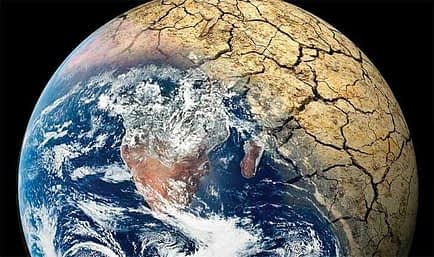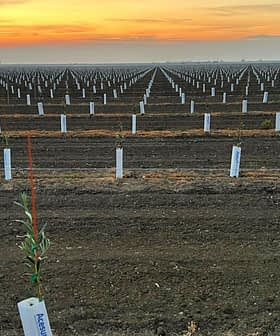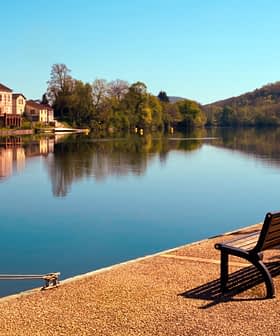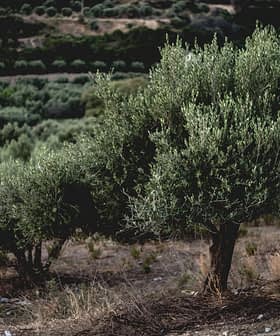Water shortage due to climate change could make parts of one of Catalonia’s top olive oil producing regions — the Siurana DOP — unviable within 20 years, according to researchers here.
Rising temperatures augur well for optimal development of the olive fruit, but the reduced rainfall and increased irrigation demands in the Siurana river basin will make production much more costly and complicated, they say.
In the recent ACCUA (Water Use Adaptations to Climate Change) project report, the scientists say that, based on their analysis of the last 40 years, “the variables that most influence the production of olive oil are the maximum temperatures in spring, and the spring and summer rainfall.”
They go on to depict a Siurana that in 20 years will be half a degree hotter and by the end of the century 3.6°C more. By 2100, the already low rainfall will have declined by about a quarter and irrigation needs shot up 95 percent to about 2500 m³ /ha/year.
Stretched along a strip in the province of Tarragona, perpendicular to the Mediterranean, the Siurana DOP (equivalent to Protected Designation of Origin) certifies an average 4000 metric tons each year of arbequina oil. Exceptions like the recent drought aside, its production has generally risen along with the mercury and wider access to supplemental irrigation from a new dam. But with the dwindling rainfall, this water supply will be severely limited. Meeting the increased water demand will be a struggle, the report warns.
And the growing season will be starting two weeks earlier by 2100, it predicts, which will in turn impact on fruit quality and water needs. The concept of “degree days” is used to assess this change in the olive tree’s life cycle and their annual total is expected to swell by more than a third by 2100.
While similar changes will affect the region’s wine industry, the impact there will be more benign. Out of grapes and olives it is the latter that is “most vulnerable crop.”
“It is difficult to propose agricultural measures that could ensure the level and stability of production,” the ACCUA authors say. “Agronomical changes seem a logical option for maintaining the livelihood of these olive farmers.”
So what could other producer regions learn from all this? Olive Oil Times spoke with lead researcher Dr. Robert Savé Montserrat, R&D Coordinator of the Environmental Horticulture Program at the IRTA research institute.
OOT: It’s often said that olive trees are very drought resistant but your research says they are among the most vulnerable crops. Why is this?
Dr. Montserrat: Olive trees, like many Mediterranean species, are very resistant to drought, but it’s necessary to put it in context, namely that of agriculture in the twenty-first century where, in addition to output (kg), we expect quality, reliability, and low inputs so as to increase efficiency. In other words, to achieve the maximum with the minimum — high efficiency.
If what is wanted is high production, high quality and stability, to allow for branding and Denominations of Origin, sales based on consistent quality, then olive trees need water.
Olive oil is consumed for many reasons apart from traditional ones, such as for its beneficial properties derived from secondary metabolism. The latter depends on many factors and among them is (heat and water) stress. Some people therefore say that unirrigated trees produce better olive oil, and some say the opposite. I just read and bear it in mind, it’s not my area of expertise.
Speaking a few years ago about the impact of climate change, Bodegas Torres chief Miguel Angel Torres said that climate change had led his wine company to buy land further north in Catalonia, near the Pyrenees. Do you think parts of Catalonia’s olive sector will end up following suit?
Personally I wouldn’t consider the Pyrenees, because frosts would be too much of a constraint for these species, and so would be the (difficult) management of the land and cultivation. Together with transport costs, the carbon footprint would be very high if these products were made in this mountainous area.
It may go beyond the scope of this research project, but what would be a more appropriate alternative to olives in the worst affected parts of the Siurana?
Yes, it its outside ACCUA’s scope and and I’m just an ecophysiologist observing the countryside.There would, however, be an alternative and it wouldn’t necessarily involve a change of species but perhaps of varieties and/or agricultural practices, for instance plantation density and summer pruning. This would probably reduce production but retain the quality and activity.
What could other producer countries learn from this research?
The ACCUA report could be useful for people in other Mediterranean countries also potentially affected by climate change. I say that because apart from indicating the need for water, the results show major changes in the phenology of this species (chill hour needs, changes in budding and flowering, changes in the metabolism of the olive fruit, etc.) with increased temperatures.
The ACCUA Project
ACCUA was set up in 2008 to assess Catalonia’s vulnerability to key effects of global climate change on water availability, and to determine the best way to minimize its negative consequences.
The research was co-ordinated by the Center of Ecological Investigation and Forestry Applications (Creaf) and other participants were IRTA, ETC-LUSI and UPC. It was funded by the CatalunyaCaixa Social Project.










